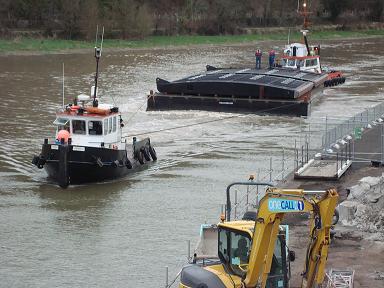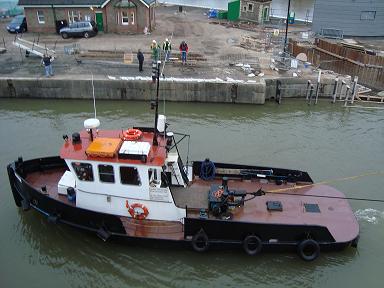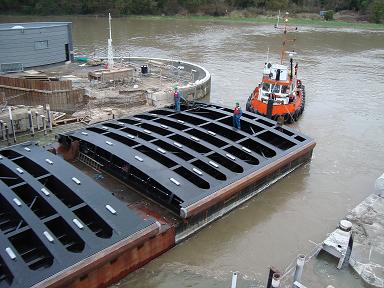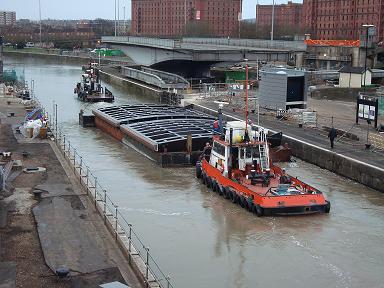The repair and replacement project at the docks consists of three phases, costing about £11m.
28 March 10:
New flood defence gates weighing 50 tonnes each are due to be installed at Bristol’s historic docks in the next few days. The steel back-up lock gates, known as leaves, travelled 1,000 miles from the Deest shipyard in the Netherlands. They arrived in Cumberland Basin this evening. The gates will replace 140-year-old Victorian wooden lock gates at Junction Lock. They were specially built by Dutch shipyard and construction company Ravestein. They will be taken into Junction Lock by pontoon barge before being lifted into place by a 500-tonne crane. Work is expected to finish on Wednesday.
 Being towed by New Ross |  New Ross |
 Bristol City Council vessel Dourdreck nudging the gates |  Passing the Brunel Swivel bridge and the open Cumberland Basin bridge |
18 March 09:
Two specially built 50-tonne steel gates travelled by pontoon up the River Avon at morning high tide. They replace the 140- year-old Victorian pitch-pine wooden gates, which were removed in December. The new gates – or ‘leaves’ – are made of steel and made by Dutch company, Ravestein. They weigh 50 tonnes each and replace the wooden gates, which weigh a staggering 80 tonnes each. A 500-tonne crane at the dockside on Brunel Lock Road lifted the gates from the pontoon and transferring them to a floating crane barge in the docks.
The crane barge lifted each gate into their final position at North Junction Lock, with the help of divers to slot them into place. The gates hold the water in the docks, and also protect the city from flooding in case the entrance gates closer to the River Avon ever fail. It was the latest stage in an £11-million scheme to secure the effective working of the historic docks and safeguard the city from flood risks. Pictures.